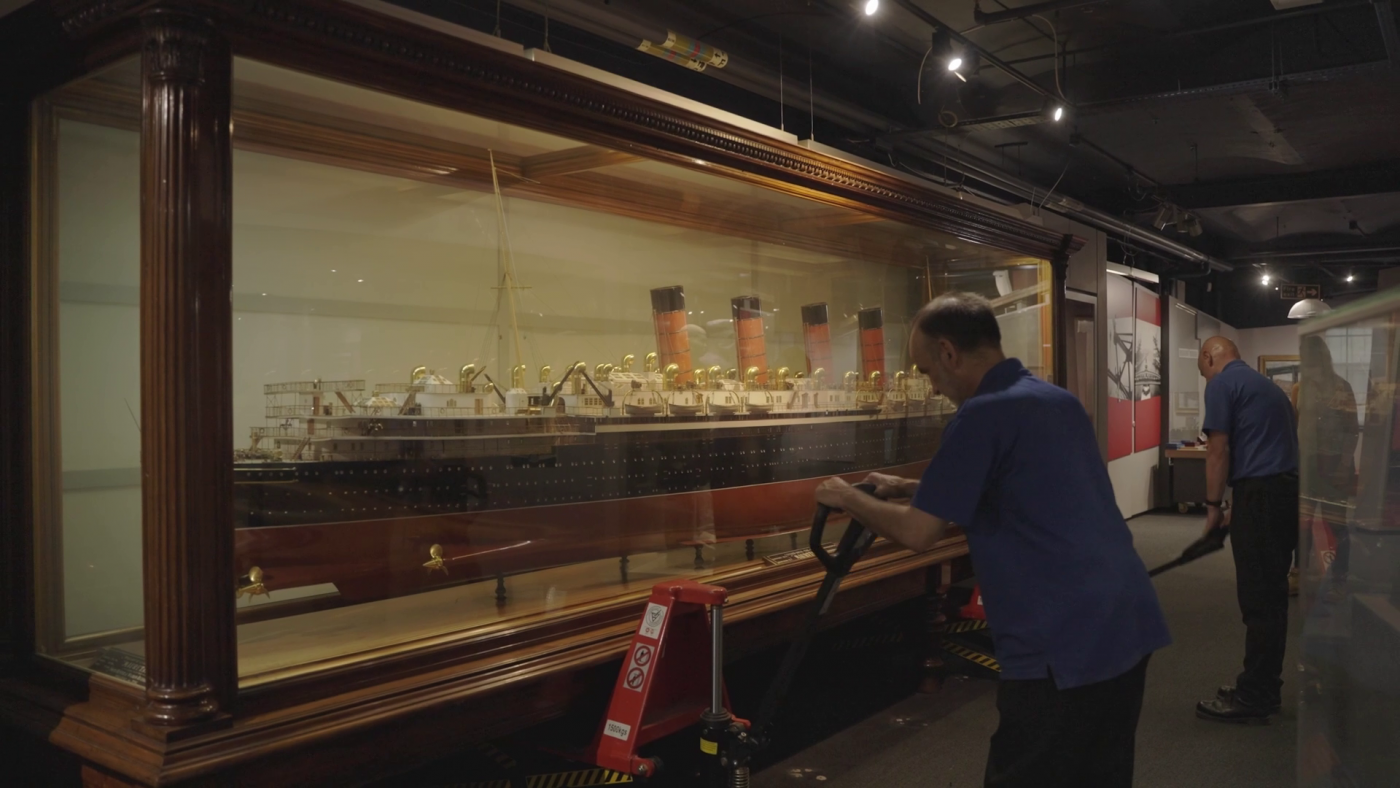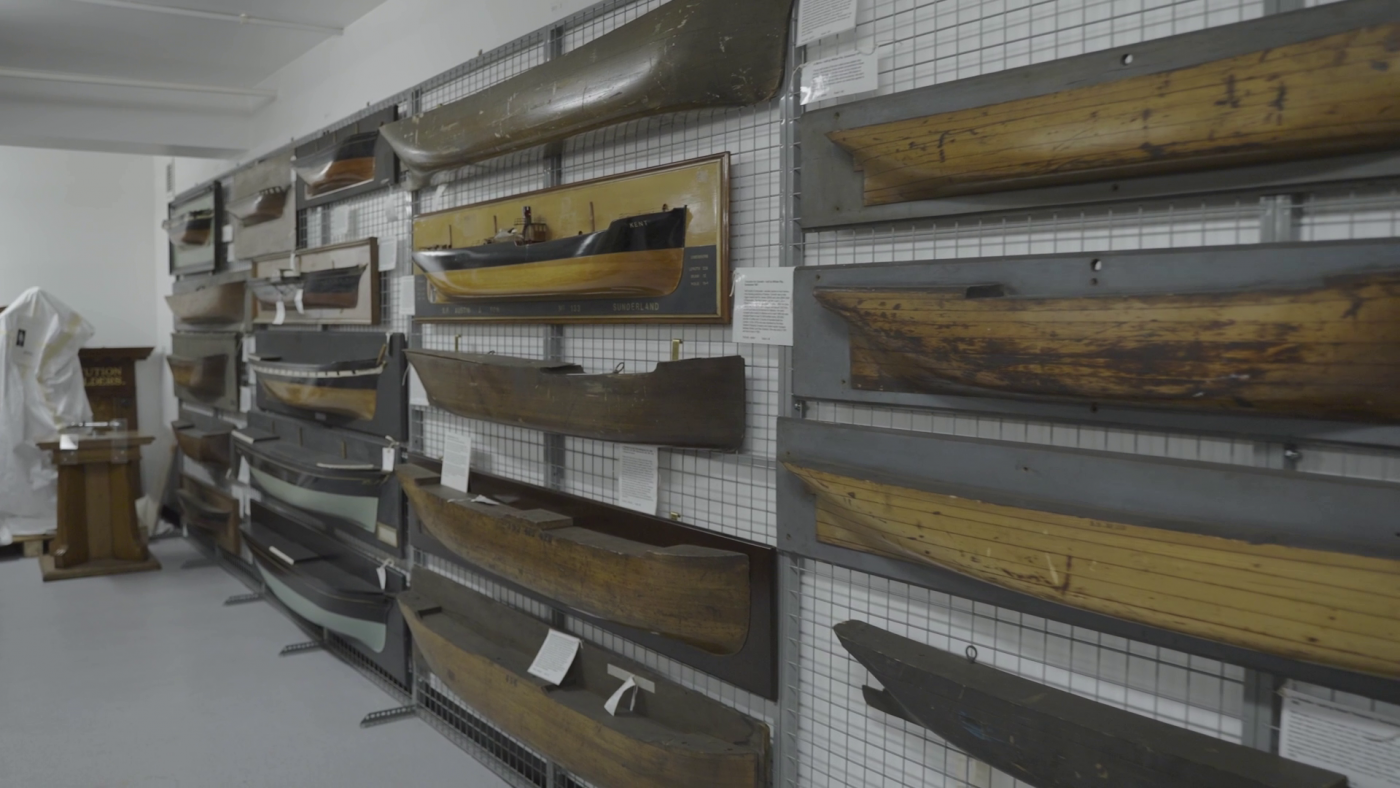Maritime Innovation in Miniature
Behind the Scenes at the Discovery Museum, Newcastle
Shipbuilding on the Tyne is one of the great rise and fall stories in maritime history. Less than a century ago the river was lined with shipyards from Tynemouth and South Shields at the mouth of the Tyne all the way to Newcastle itself, under the great bridges, to Elswick. These yards built some of the mightiest and most innovative ships in history, proving employment for hundreds of thousands of yard workers and the businessmen and women who kept the massive industry moving efficiently. It was here that engineers pioneered innovative science, technology and engineering that has a profound influence worldwide.
And yet, today, the yards no longer exist - none of them: an entire industry bound by its culture and unique skills and which gave this region a global reputation has been lost. It survives now only in local memory and archives. Fortunately those memories and archives are served brilliantly by Discovery Museum, the location for our penultimate shoot of 2023.

The first model we filmed was Baikal (1899), one of the most innovative ships of the nineteenth century. A train ferry and ice breaker, Baikal provided the final link in the trans-Siberian railway. By allowing trains to cross Lake Baikal, the largest inland lake in the world, the railway was complete and it became possible to travel by rail from Moscow to Vladivostok on the Pacific Coast. Not only was her design innovative, but so too her construction: she was built on the Tyne, underwent sea trials in the North Sea and English Channel and was then dismantled, shipped in pieces 4000 miles to Lake Baikal in Siberia and reassembled with a Russian workforce, overseen by Geordie engineers and managers.
The second model was Bucket Dredger no.9, a steam dredger built when the engineering of dredging had reached a new peak. These little-remarked vessels are hugely important to the history of maritime innovation and technology, not only for their own design but for the fact that, by dredging rivers and ports ever deeper they allowed shipping to expand in size and secured the safety of their navigation in port. They also play an important part in the history of the marine environment and its troubled links with maritime technology and nowhere is this clearer than the Tyne. Able to move 800 tons of silt per hour to make the river safe for the navigation of the world’s largest ships, vessels like this destroyed the Tyne’s ecosystem to the extent that, by the 1950s it was declared ‘biologically dead’. Only now, seventy years later and after generations of considered care is wildlife returning and its waters becoming clean, running with Tyne salmon once again.
The final model is a masterpiece of maritime engineering and design, a true icon of historic shipbuilding. Mauretania was launched in 1906 and was the first liner to be fitted with Charles Parsons’ new steam turbine engines. Parsons’ invention revolutionised shipping. The ships could travel faster, for longer, and with far less servicing required than triple expansion piston steam-engines – the pinnacle of the previous generation’s engine designs. Mauretania not only beat the record the fastest transatlantic record but then, remarkably, held it for the next twenty years. Her innovative nature meant that her design was not without problems and yet she captured the public imagination – one of the finest examples in history of a tangible and celebrated link between a nation and the maritime world.
The largest model we have yet filmed (well over four metres in length) moving the model into a location we could set up the filming equipment was a notable challenge, as was removing the glass from such a large case. But with professional help from the team at Glasshouse Displays and the fabulous curatorial and volunteer team at Discovery Museum, Mauretania was temporarily freed from her case and preserved on film.

Discovery Museum also provided a cornucopia of maritime treasures for our ‘Behind The Scenes’ film. An enormous diorama of the shipyards on the entire length of the Tyne, built in 1929, demonstrated the scale of the area’s maritime heritage and to complement it an entire wall full of ship models, in the largest museum display case in Europe.
The team in the archives located ship plans and photographs for both Baikal and Mauretania. Baikal was shown during construction on the Tyne as well as its re-construction on the frozen shores of Lake Baikal. A photograph of the workers who rebuilt her in the most inhospitable conditions a powerful statement of the effort and energy that this project entailed. Photographs of Mauretania’s interior were a profound reminder that she was famed not just for her innovative technology but for the new level of passenger luxury provided. We also saw beautifully illustrated ship plans of a cruiser built for the Chinese Navy, a reminder that Newcastle yards built ships for international customers forging a link that was particularly strong between Newcastle, China and Japan.
The museum’s stores also provided an extraordinary opportunity to appreciate the depth of the collections. We filmed their half-block collection which takes up an entire wall of the stores as well as a fascinating cut-away model of the Cleopatra – an innovative iron vessel built in the 1870s to bring an Egyptian obelisk back from Alexandria to London (it’s still there on display on the Embankment). There was even a model of Noah’s Ark – the original example of maritime innovation! This was built in 1947 for a national competition held by shipyards all over the UK to make a model of the Ark.

The real of gem of the collections is the Turbinia. This time not a model – but the real thing. This is the actual vessel built by Charles Parsons in 1894 to prove that his newly-invented steam turbine engine – originally conceived as a way of producing electricity – could be applied to the maritime world. An experimental vessel of the highest historical value, Turbinia was the fastest vessel in the world and within just a few years Parsons’ technology was being applied in both mercantile and naval design – changing the world forever.

